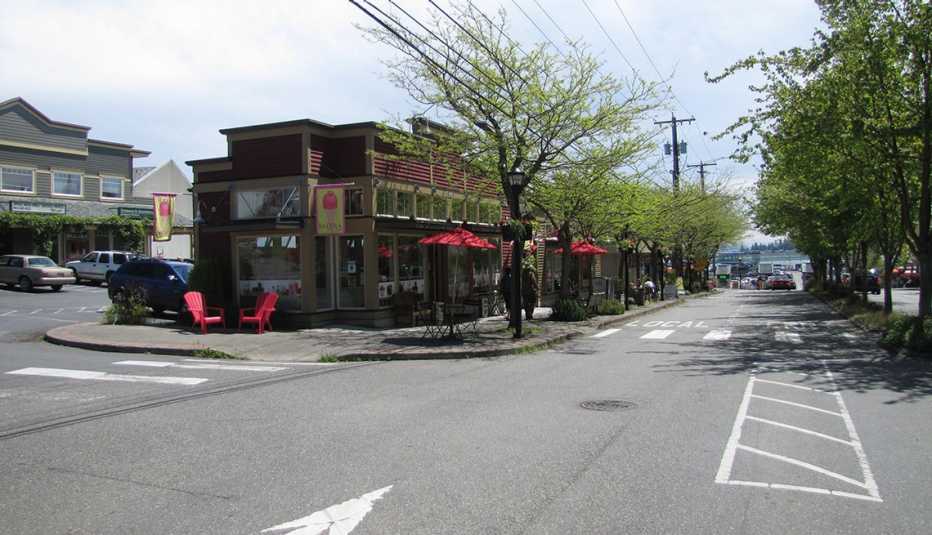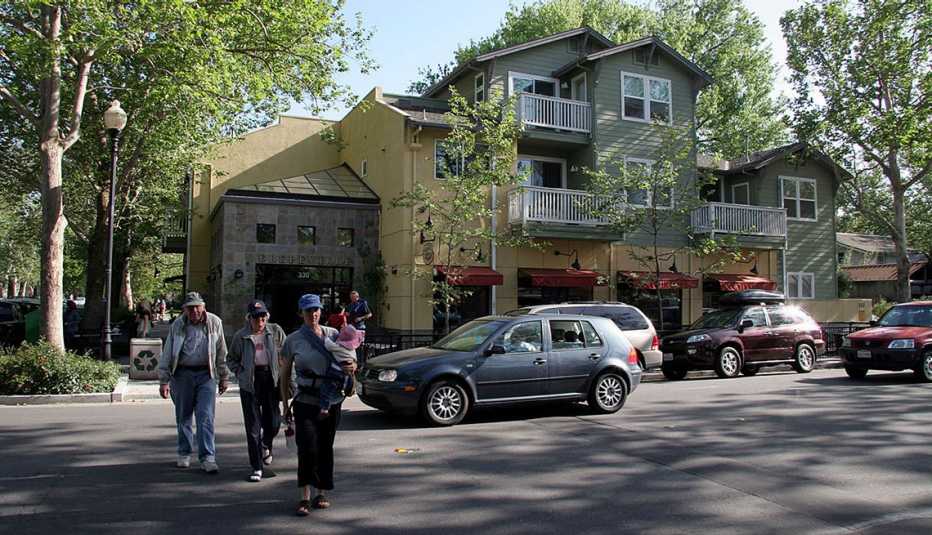AARP Hearing Center
Solutions from The Imagining Livability Design Collection
With short-term and mid-range treatments in place, the area becomes safer and more attractive to residents and others, including developers. When that happens, new policies and mixed-use development can help transform a street or entire neighborhood into a more livable and prosperous place. Long-range initiatives can be relatively low-cost, especially if they're focused on policy change, but the efforts generally take several years to fully implement.
Liner Buildings


Sprawling development and "strip malls" commonly feature buildings that are set back from the street with large surface parking lots in front. Liner buildings help convert this type of development into a pedestrian-scaled area by replacing a part of the surface parking with buildings that "line" the edge of the former parking lot and are close to the street and adjacent to sidewalks. Transparency (i.e. the amount of window space) is an important feature and benefit of liner buildings, which, when located in retail areas, should be at least 70 percent "transparent" on the street-facing side. Liner buildings create a sense of place, enhance the liveliness of a community and, as "eyes on the street," its safety. Over time, the old strip mall-style buildings can be redeveloped so the entire area becomes more of an urban village.
Mixed-Use Development


Buildings that are designed for mixed uses are more efficient than single-use and single-floor buildings, and they contribute to a more prosperous, people-friendly environment. A building of two to eight stories, with retail on the bottom floor facing the street and office or residential uses on the upper floors, creates a much higher return on investment, with greater long-term tax revenue and a more walkable and healthy community.
Editor's Note: The Imagining Livability Design Collection was published in Spring 2015 by AARP Livable Communities and the WALC (Walkable and Livable Communities) Institute. The institute has since closed shop, but the 40-page publication it helped develop remains a valuable resource for communities and local leaders.


























































